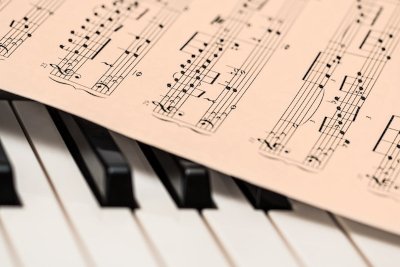Welcome to St. Mary’s Music
My soul, give praise to the Lord; I will praise the Lord all my days, make music to my God while I live. (Psalm 145:1-2)
Mission Statement:

According to the Second Vatican Council, “the purpose of sacred music, … is the glory of God and the sanctification of the faithful.” (Sacrosanctum Concilium 112) It is with this in mind that we carry out our music ministry. The liturgy is given a more noble form when celebrated in song. It “adds delight to prayer, fosters unity of minds.” (SC 112) The voice, therefore, is the preeminent instrument used in the liturgy.
If the voice is the preeminent instrument, the Word of God is the preeminent text. Our choice of music must be deeply rooted in sacred scripture, which in turn may inspire alternative worthy texts, like hymns and other spiritual songs. The musical patrimony of the church is a great treasure. It is music deeply rooted in sacred scripture.
The preeminence of the voice is also reflected in the deep desire for “the whole body of the faithful may be able to contribute that active participation which is rightly theirs.” (SC 114) That participation can be actual singing or active listening to the music.
The music we sing is also of utmost importance. “The Church acknowledges Gregorian chant as specially suited to the Roman liturgy: therefore, other things being equal, it should be given pride of place in liturgical services.” (SC 116) The people are encouraged to sing the parts of the mass that belong to them, but especially in Latin. (Musicam Sacram 47) St Paul VI made tangible efforts to promote the use of Gregorian Chant and Latin in the Liturgy by issuing a list of chants that he believed every Catholic should know.
The musical patrimony of the church is a treasure of incalculable value that should be promoted in the present day alongside noble and worthy compositions of the day. Chant brings the eschatological nature of liturgical music to the fore. With the unity of voices, “the whole celebration more clearly prefigures that heavenly liturgy which is enacted in the holy city of Jerusalem.” (MS 5) Singing music from different eras creates a musical eschatology. The assembly of today connects to those who worshipped in the past and are now celebrating the heavenly liturgy. We must musically strive to link the worshippers of today with that of the past of the future.
“In the Latin Church the pipe organ is to be held in high esteem, for it is the traditional musical instrument which adds a wonderful splendor to the Church’s ceremonies and powerfully lifts up man’s mind to God and to higher things.” (SC 120) One must only listen to an organ to realize why it is called the ‘King of Instruments.’ It is an incredibly versatile instrument that, with skill, may effectively portray the colors and moods of the seasons and feasts of the Church. It is also an instrument that will sustain the many voices of the gathered assembly. All in the objective to offer worthy praise and glory to God, and to make His people holy.
Director of Music: Seth Jines, ext. 114. sethj@stmaryofsorrows.org